Related Research Articles

A drink is a liquid intended for human consumption. In addition to their basic function of satisfying thirst, drinks play important roles in human culture. Common types of drinks include plain drinking water, milk, coffee, tea, hot chocolate, juice and soft drinks. In addition, alcoholic drinks such as wine, beer, and liquor, which contain the drug ethanol, have been part of human culture for more than 8,000 years.

Alcohol intoxication, also known as drunkenness or alcohol poisoning, is the negative behavior and physical effects caused by a recent consumption of alcohol. Symptoms at lower doses may include mild sedation and poor coordination. At higher doses, there may be slurred speech, trouble walking, and vomiting. Extreme doses may result in a respiratory depression, coma, or death. Complications may include seizures, aspiration pneumonia, injuries including suicide, and low blood sugar. Alcohol intoxication can lead to alcohol-related crime with perpetrators more likely to be intoxicated than victims.

Low-alcohol beer is beer with little or no alcohol content and aims to reproduce the taste of beer while eliminating the inebriating effects of standard alcoholic brews. Most low-alcohol beers are lagers, but there are some low-alcohol ales. Low-alcohol beer is also known as light beer, non-alcoholic beer, small beer, small ale, or near-beer.

A restaurant, or an eatery, is a business that prepares and serves food and drinks to customers. Meals are generally served and eaten on the premises, but many restaurants also offer take-out and food delivery services. Restaurants vary greatly in appearance and offerings, including a wide variety of cuisines and service models ranging from inexpensive fast food restaurants and cafeterias, to mid-priced family restaurants, to high-priced luxury establishments.

A soft drink is a drink that usually contains carbonated water, a sweetener, and a natural and/or artificial flavoring. The sweetener may be a sugar, high-fructose corn syrup, fruit juice, a sugar substitute, or some combination of these. Soft drinks may also contain caffeine, colorings, preservatives, and/or other ingredients.
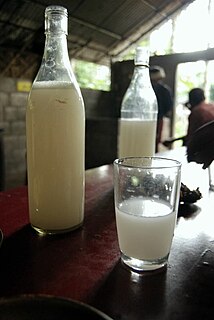
Palm wine, known by several local names, is an alcoholic beverage created from the sap of various species of palm tree such as the palmyra, date palms, and coconut palms. It is known by various names in different regions and is common in various parts of Africa, the Caribbean, South America, South Asia, Southeast Asia and Micronesia.
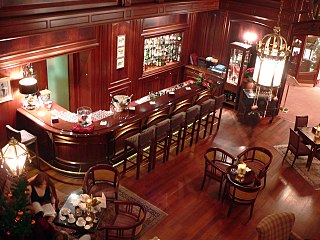
A bar is a long raised narrow table or bench designed for dispensing beer or other alcoholic drinks. They were originally chest high, and a bar, often brass, ran the length of the table, just above floor height, for customers to rest a foot on, which gave the table its name. Over many years, heights of bars were lowered, and high stools added, and the brass bar remains today. The name bar became identified with the business, is a retail business establishment that serves alcoholic beverages, such as beer, wine, liquor, cocktails, and other beverages such as mineral water and soft drinks. Bars often also sell snack foods such as crisps or peanuts, for consumption on their premises. Some types of bars, such as pubs, may also serve food from a restaurant menu. The term "bar" also refers to the countertop and area where drinks are served. The term "bar" derives from the metal or wooden bar (barrier) that is often located along the length of the "bar".

Drinking culture is the set of traditions and social behaviors that surround the consumption of beverages containing ethanol as a recreational drug and social lubricant. Although alcoholic beverages and social attitudes toward drinking vary around the world, nearly every civilization has independently discovered the processes of brewing beer, fermenting wine and distilling spirits.
A dram shop is a bar, tavern or similar commercial establishment where alcoholic beverages are sold. Traditionally, it is a shop where spirits were sold by the dram, a small unit of liquid.
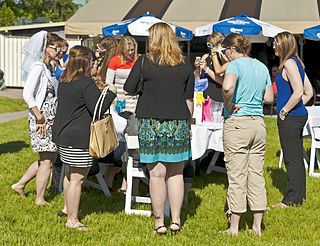
A hen night or bachelorette party is a party held for a woman who is about to get married. While Beth Montemurro concludes that the bachelorette party is modelled after the centuries-old stag night in the US, which is itself historically a dinner given by the bridegroom to his friends shortly before his wedding, Sheila Young argues that its British counterpart evolved from a number of earlier pre-wedding traditions for women whose origins are obscure but which have been around for at least a century in factories and offices across the UK. Despite its reputation as "a sodden farewell to maiden days" or "an evening of debauchery", these events can simply be parties given in honor of the bride-to-be, in the style that is common to that social circle.

An airline meal, airline food, or in-flight meal is a meal served to passengers on board a commercial airliner. These meals are prepared by specialist airline catering services and normally served to passengers using an airline service trolley.
A hostess club is a type of night club found primarily in Japan. They employ primarily female staff and cater to men seeking drinks and attentive conversation. The modern host club is a similar type of establishment where primarily male staff attend to women. Host and hostess clubs are considered part of mizu shōbai, the night-time entertainment business in Japan.
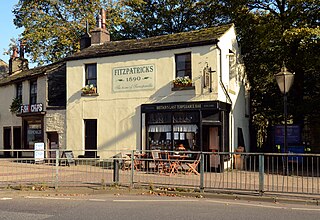
A temperance bar, also known as an alcohol-free bar, sober bar, or dry bar, is a type of bar that does not serve alcoholic beverages. An alcohol-free bar can be a business establishment or located in a non-business environment or event, such as at a wedding. Alcohol-free bars typically serve non-alcoholic beverages, such as non-alcoholic cocktails known as mocktails, alcohol-free beer or low-alcohol beer, alcohol-free wine, juice, soft drinks and water. Popular temperance drinks include cream soda, dandelion and burdock, sarsaparilla, and Vimto, among others. Various foods may also be served.
A liquor license is a governmentally issued permit to sell, manufacture, store, or otherwise use alcoholic beverages.

Alcoholic drinks in Sweden are as common as in most of the western world. Sweden is historically part of the vodka belt, with high consumption of distilled drinks and binge drinking, but during the later half of the 20th century, habits are more harmonized with western Europe, with increasing popularity of wine and weekday drinking. Wine is now also grown and produced in several parts of Sweden and the southernmost region of Skåne is turning into a hub experiencing a strong growth in number of active vineyards.

A drinking establishment is a business whose primary function is the serving of alcoholic beverages for consumption on the premises. Some establishments may also serve food, or have entertainment, but their main purpose is to serve alcoholic beverages. There are different types of drinking establishment ranging from seedy bars or nightclubs, sometimes termed "dive bars", to 5,000 seat beer halls and elegant places of entertainment for the elite. A public house, informally known as a "pub", is an establishment licensed to serve alcoholic drinks for consumption on the premises in countries and regions of British influence. Although the terms are increasingly used to refer to the same thing, there is a difference between pubs, bars, inns, taverns and lounges where alcohol is served commercially. A tavern or pot-house is, loosely, a place of business where people gather to drink alcoholic beverages and, more than likely, also be served food, though not licensed to put up guests. The word derives from the Latin taberna and the Greek ταβέρνα/taverna.
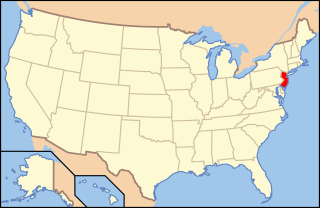
The state laws governing alcoholic drinks in New Jersey are among the most complex in the United States, with many peculiarities not found in other states' laws. They provide for 29 distinct liquor licenses granted to manufacturers, wholesalers, retailers, and for the public warehousing and transport of alcoholic drinks. General authority for the statutory and regulatory control of alcoholic drinks rests with the state government, particularly the Division of Alcoholic Beverage Control overseen by the state's Attorney General.
A caffeinated alcoholic drink is a drink that contains both alcohol and caffeine. They often include the ingredients of energy drinks as well. In 2010 and 2011, this type of drink faced criticism for posing health risks to their drinkers. In some places there is a ban on caffeinated alcoholic drinks.
A well drink or rail drink is an alcoholic beverage served using the lower-cost liquors stored within easy reach of the bartender in the counter "speed rail", "speed rack", or "well".

Noah's wine is a colloquial allusion meaning alcoholic beverages. The advent of this type of beverage and the discovery of fermentation are traditionally attributed, by explication from biblical sources, to Noah. The phrase has been used in both fictional and nonfictional literature.
References
- 1 2 3 4 Robin E. Craven & Lynn Johnson Golabowski (2001). The Complete Idiot's Guide to Meeting and Event Planning. Alpha Books. pp. 192. ISBN 9780028640044.
- ↑ S. Medlik (2003). "cash bar". Dictionary of Travel, Tourism and Hospitality. Butterworth-Heinemann. pp. 33. ISBN 9780750656504.
- ↑ S. Medlik (2003). "host bar". Dictionary of Travel, Tourism and Hospitality. Butterworth-Heinemann. pp. 86. ISBN 9780750656504.
- 1 2 3 4 Harry A. Freedman & Karen Feldman (2007). Black Tie Optional. Wiley-Interscience. pp. 122–123. ISBN 9780470116814.
- 1 2 3 Tracy Leigh (2008). How to Plan Your Own Wedding and Save Thousands. Atlantic Publishing Company. pp. 207–208. ISBN 9781601380074.
- ↑ Douglas Robert Brown (2005). The Food Service Manager's Guide to Creative Cost Cutting. Atlantic Publishing Company. p. 460. ISBN 9780910627610.
- ↑ Douglas Robert Brown & Elizabeth Godsmark (2002). Controlling Liquor, Wine & Beverage Costs. Atlantic Publishing Company. p. 123. ISBN 9780910627184.
- ↑ Shelly Hagen (2006). The Everything Wedding Organizer. Everything Books. pp. 135–138. ISBN 9781593376406.
- ↑ Crystal Melendez & Jason Melendez (2007). E-Plan Your Wedding. Mediasoft Press. pp. 218. ISBN 9781933457000.